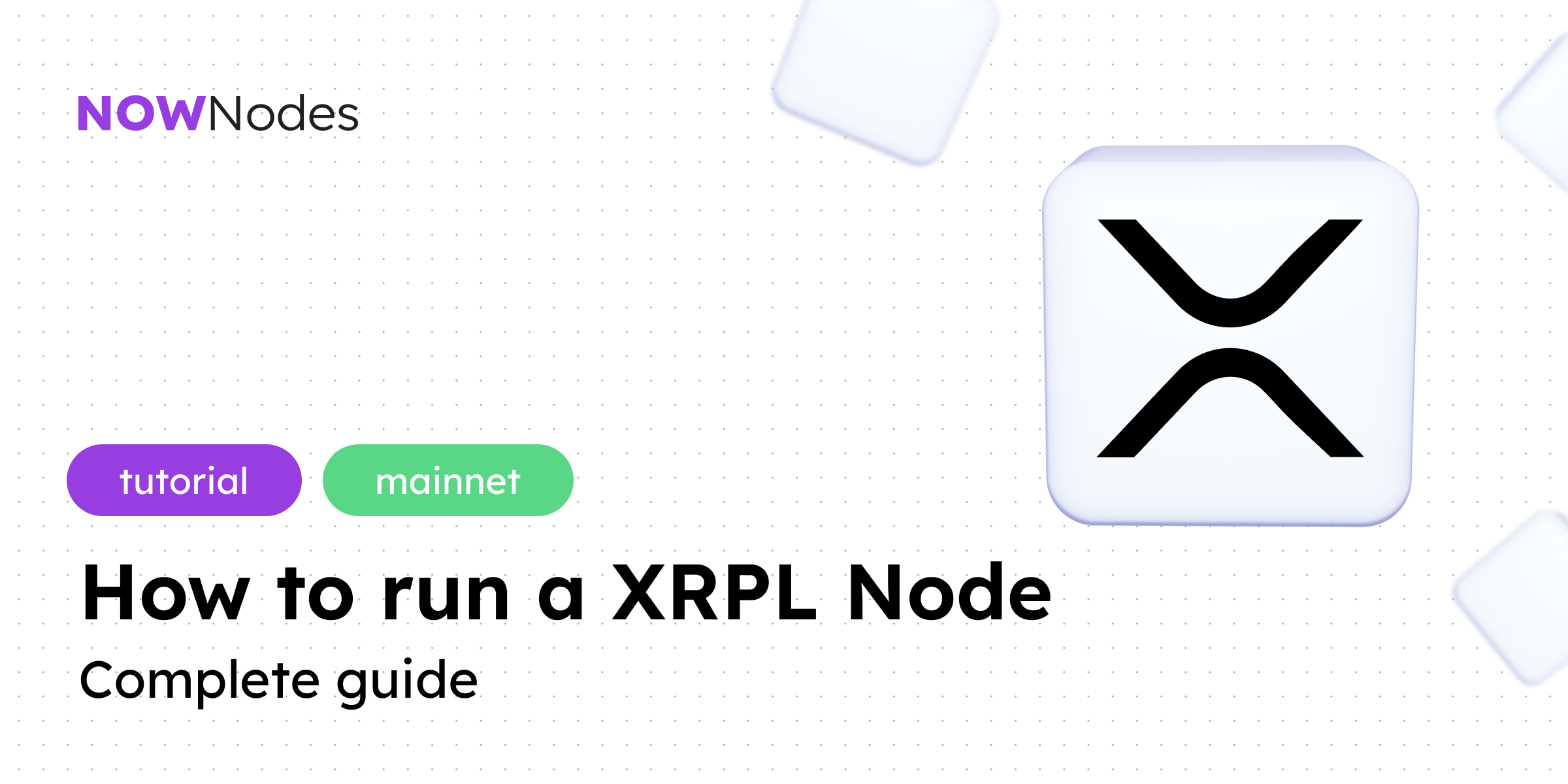XRP is back in the spotlight. With global attention on cross-border payments, tokenized assets, and institutional adoption, the XRP Ledger is more relevant than ever. Whether you’re building wallets, DeFi apps, or exploring blockchain integrations, getting access to XRPL has become a must. So naturally, you might think: “How to run a XRP node?”
Let’s dive in!
How to run a XRP node by yourself?
Here’s the short version how you can do it:
- Install
rippled, the official XRP Ledger server. - Configure your node using the recommended settings based on your use case (validator, API server, dev machine, etc.).
- Sync with the network, choose your storage backend (NuDB or RocksDB), and set up ports and SSL for secure access.
- Maintain and monitor your node for uptime, version upgrades, and performance.
To make this easier, Ripple’s team has released a great tool: XRPL Node Configurator
It walks you through all key decisions (ledger history, node size, network type, security settings) and generates your config files (rippled.cfg, validators.txt, etc.) in a ready-to-use ZIP package.
The Node Problem Most Devs Don’t Talk About
Sure, running your own node sounds like the “true decentralized” way to connect. And there are real benefits—direct access to ledger data, full control over your environment, and the ability to become a validator.
But the trade-offs are significant.
You’ll need to configure the right database backend, keep up with software updates, manage SSL, monitor uptime, and allocate decent hardware just to stay in sync. If you want full ledger history, be prepared to handle terabytes of data.
Unless you really need that level of control, you’re trading weeks of setup and maintenance for something that can be solved with a few lines of code.
Accessing XRPL the Smarter Way
NOWNodes gives you access to full XRP nodes without the infrastructure headache. You can use the XRP Ledger just like you would with your own server—query balances, send transactions, track payments—all via a clean, reliable API.
Whether you’re building a wallet, automating payments, or running analytics, NOWNodes helps you move fast. The service supports both JSON-RPC and WebSocket, has Testnet access for development, and scales as your needs grow.
Who Should Use NOWNodes?
If you’re building with XRP but don’t need to be a validator or store years of ledger history, this is for you. It’s perfect for:
- Startups and indie devs who just want to launch and iterate quickly
- Teams building wallets, payment gateways, or XRPL integrations
- Projects that rely on the XRP Ledger but can’t afford downtime or DevOps overhead
- Developers working in Testnet environments
Basically, if you’re not running mission-critical infrastructure or consensus nodes, there’s little reason to do it all yourself.
Getting Started with NOWNodes
Jumping in is straightforward. You sign up, get your API key, and connect to XRP endpoints instantly. You can start making requests like:
https://xrp.nownodes.io'
Or subscribe to live updates with WebSocket for real-time transaction monitoring.
It’s infrastructure on demand—simple, stable, and production-ready.
The Bottom Line
XRP is gaining momentum again, and if you’re building on the XRPL, you want to move fast and stay focused on your product. Running your own node gives you power, but also complexity.
Unless you need deep control, NOWNodes gives you everything you want—without the overhead.
Let them handle the backend, so you can keep building what matters.



